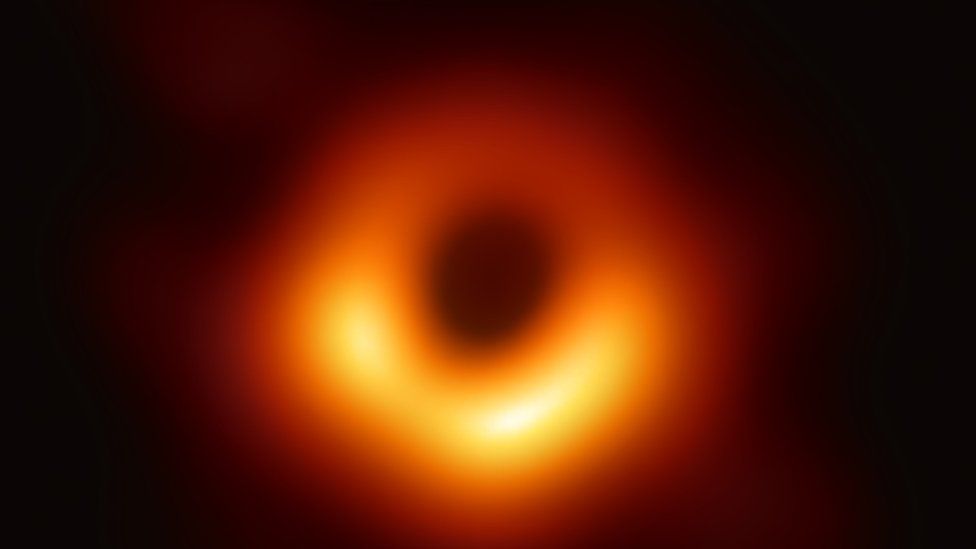“We’re looking at a region that we’ve never looked at before — a region we cannot imagine being there. It feels like looking at the gates of Hell, at the end of space and time: the event horizon, the point of no return. That is awe-inspiring to me, at least, but it’s also important to physics.”
Those are the words of Heino Falcke, part of a 200-person science team across the world as he unveiled Man’s first image of a black hole in space. He spoke today, April 10, 2019, at a press briefing in Europe. In Washington DC, a simultaneous press briefing was led by Sheperd Doeleman, who discussed the effort to image a black hole at SXSW in Austin in March 2019.
“We took our first data with the Event Horizon Telescope (EHT) in April 2017,” Doeleman told the audience in Austin. “We have Einstein and Schroedinger looking over our shoulders,” he said, referring to the two great scientists of the 20th century who worked on the theory and mathematics that led to our understanding black holes exist.
“A black hole is an extreme warp in space-time,” explained Dimitrios Psaltis at the SXSW panel. Studying the physics of that used to rely on really powerful computers. That has changed within the last few years. “We don’t need supercomputers anymore. We can do simulations on laptops, and we are now exploring black hole physics with augmented reality.”
In March, Psaltis said that the “shape and shadow of the black hole can be calculated precisely. This will be compared to the actual observation to see if Einstein is 100% right.” Now that we have the image, what is the verdict on Einstein and his Theory of General Relativity?
This was answered at the Washington DC meeting by Avery Broderick, a scientist I know from my visits to the Perimeter Institute in Canada. Broderick if a professor of physics at the University of Waterloo, where I got my physics degree. “Today General Relativity has passed another crucial test. The shadow we see is circular, as predicted. Sometimes the math looks ugly, but the Einstein equations are beautiful. It is fundamentally one of the most beautiful theories we have.”
But they may not answer every question. “The problem of quantum gravity remains unsolved,” said Broderick, “but black holes are one of the places to look for answers. How does gravity actually work?”
The black hole they imaged measures 40 billion km across – three million times the size of the Earth – and has been described by scientists as “a monster”. The black hole is 500 million trillion km away and was photographed by a network of eight telescopes in several countries. At SXSW in Austin, Peter Gallison of Harvard, another team member, said “the first observational evidence for black holes was made in the 1970s, but my senior colleagues were not persuaded.”
Recent telescopic observations of the galaxy M87, the target of the EHT, “lets us see that a massive object is dragging whole stars around it. What could it mean to have an image of a black hole?” Just a month after he spoke, the world now knows.
Doeleman said at the news conference on April 10 that when he saw the image, his reaction was “just astonishment and wonder: to know we have uncovered a part of the Universe that was off limits to us. We have verified Einstein’s theory of gravity in this most extreme environment.”
